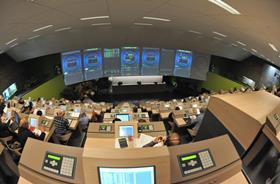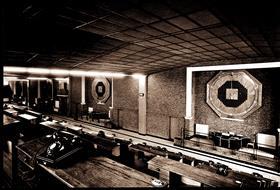


The auction clock was introduced in 1950 at the Mechelen Horticultural Auction, one of the predecessors of Belgian cooperative BelOrta, as an impartial, objective and non-influenceable system for determining a fresh product’s price.
According to BelOrta, the introduction of the clock system marked one of the biggest steps in the modernisation of fruit and vegetable sales.
From Monday to Friday, buyers put the law of supply and demand into practice in BelOrta’s sales hall. Sales are made possible by six computer-controlled auction clocks, which display various data, including the product name, the quality and the unit price.
Buyers follow the evolution of a product’s price on a clock with 100 glowing lights. The clock shows a starting price, which goes down as the clock turns counterclockwise.
“The buyer who first presses his or her button closes the transaction and gets an audio connection with the auctioneer,” BelOrta explained. “He can then communicate the desired number of boxes to the auctioneer via the communication system. The buyer's transport service is often ready to load the purchased crates immediately after this sale. In this way, we create an ultra-short and fast logistics chain.”
As a result of rapid technological developments, the clock function has equally undergone a transformation. Today, connected buyers can also follow all clock movements and conclude transactions from their computers at home.
The Simultaneous Network – with a real-time, worldwide connection – ensures that buyers in BelOrta’s sales hall can also bid on products that are being offered simultaneously at other Belgian auctions.



